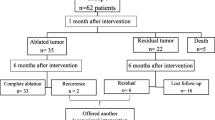Abstract
Fibrolamellar hepatocellular carcinoma (FLC) occurs in non-cirrhotic liver and the etiopathogenesis is still obscure. Both hepatocellular and cholangiocellular markers are expressed in the tumor, however, molecular alterations and altered pathways playing role in the tumor pathogenesis are not clearly identified. The purpose of the present study was to compare the expression level of EGFR, syndecan-1 and ß-catenin in FLC, conventional hepatocellular carcinoma (cHCC) and cholangiocellular carcinoma (CCC) and to investigate the possibility of mutation both in EGFR and K-RAS. Eight FLCs were compared with 7 cHCCs, 7 CCCs and 5 normal liver samples. Cytokeratins 7, 8, 18, 19, HepPar1 (HSA), EGFR, syndecan-1 (CD138) and ß-catenin were detected by immunohistochemistry. In addition EGFR, ß-catenin and syndecan-1 were evaluated by digital morphometry and K-RAS, EGFR mutations in FLC cases using paraffin-embedded samples. All FLCs were positive for HepPar1 (HSA) and cytokeratins 7, 8, 18, but negative for cytokeratin 19 by immunohistochemistry. EGFR was significantly overexpressed in all three tumor types, being highest in FLCs (p = 0,0001). EGFR, K-RAS mutation analyses revealed no mutations in exons studied in FLCs. Our findings proved that expression of EGFR is higher in FLC than in other types of primary malignant hepatic tumors and no K-RAS mutation can be detected, so FLC is a good candidate for anti-EGFR treatment.





Similar content being viewed by others
References
Abdul-Al HM, Wang G, Makhlouf HR, Goodman ZD (2010) Fibrolamellar hepatocellular carcinoma: An immunohistochemical comparison with conventional hepatocellular carcinoma. Int J Surg Pathol 18:313–318
Kannangai R, Vivekanandan P, Martinez-Murillo F, Choti M, Torbenson M (2007) Fibrolamellar carcinomas show overexpression of genes in the RAS, MAPK, PIK3, and xenobiotic degradation pathways. Hum Pathol 38:639–644
Liu S, Chan KW, Wang B, Qiao L (2009) Fibrolamellar hepatocellular carcinoma. Am J Gastroenterol 104:2617–2624
Torbenson M (2007) Review of the clinicopathologic features of fibrolamellar carcinoma. Adv Anat Pathol 14:217–223
Ward SC, Huang J, Tickoo SK, Thung SN, Ladanyi M, Klimstra DS (2010) Fibrolamellar carcinoma of the liver exhibits immunohistochemical evidence of both hepatocyte and bile duct differentiation. Mod Pathol 23:1180–1190
Patonai A, Erdélyi-Belle B, Korompay A, Somorácz Á, Straub BK, Schirmacher P, Kovalszky I, Lotz G, Kiss A, Schaff Z (2011) Claudins and tricellulin in fibrolamellar hepatocellular carcinoma. Virchows Arch 458:679–688
Kakar S, Chen X, Ho C, Burgart LJ, Sahai V, Dachrut S, Yabes A, Jain D, Ferrell LD (2009) Chromosomal changes in fibrolamellar hepatocellular carcinoma detected by array comparative genomic hybridization. Hum Pathol 22:134–141
International Consensus Group for Hepatocellular Neoplasia (2009) Pathologic diagnosis of early hepatocellular carcinoma: A report of the International Consensus Group for Hepatocellular Neoplasia. Hepatology 49:658–664
Libbrecht L, Severi T, Cassiman D, Vander Borght S, Pirenne J, Nevens F, Verslype C, van Pelt J, Roskams T (2006) Glypican-3 expression distinguishes small hepatocellular carcinomas from cirrhosis, dysplastic nodules, and focal nodular hyperplasia-like nodules. Am J Surg Pathol 30:1405–1411
Sirivatanauksorn Y, Sirivatanauksorn V, Lemoine NR, Williamson BR, Davidson BR (2001) Genomic homogeneity in fibrolamellar carcinomas. Gut 49:82–86
Vivekanandan P, Torbenson M (2008) Epigenetic insility is rare in fibrolamellar carcinomas but common in viral-associated hepatocellular carcinomas. Mod Pathol 21:670–675
Buckley AF, Burgart LJ, Kakar S (2006) Epidermal growth factor receptor expression and gene copy number in fibrolamellar hepatocellular carcinoma. Hum Pathol 37:410–414
Llovet JM, Bruix J (2008) Novel advancements in the management of hepatocellular carcinoma in 2008. J Hepatol 48:S20–S37
Ishak KG, Goodman ZD, Stocker JT (2001) Tumors of the Liver and Intrahepatic Bile Ducts. Atlas of Tumor Pathology, Third Series, Fascicle 31. Armed Forces Institute of Pathology, Washington, DC
Ikari A, Atomi K, Takiguchi A, Yamazaki Y, Miwa M, Sugatani J (2009) Epidermal growth factor increases claudin-4 expression mediated by Sp1 elevation in MDCK cells. Biochem Biophys Res Commun 384:306–310
Kojima T, Murata M, Yamamoto T, Lan M, Imamura M, Son S, Takano K, Yamaguchi H, Ito T, Tanaka S, Chiba H, Hirata K, Sawada N (2009) Tight junction proteins and signal transduction pathways in hepatocytes. Histol Histopathol 24:1463–1472
Cieply B, Zeng G, Proverbs-Singh T, Geller DA, Monga SPS (2009) Unique phenotype of hepatocellular cancers with exon-3 mutations in beta-catenin gene. Hepatology 49:821–831
Vivekanandan P, Daniel H, Yeh MM, Torbenson M (2010) Mitochondrial mutations in hepatocellular carcinomas and fibrolamellar carcinomas. Mod Pathol 23:790–798
Li W, Tan D, Zenali MJ, Brown RE (2010) Constitutive activation of nuclear factor- kappa B (NF-kB) signaling pathway in fibrolamellar hepatocellular carcinoma. Int J Clin Exp Pathol 3:238–243
Sethi S, Tageja N, Singh J, Arabi H, Dave M, Badheka A, Revankar S (2009) Hyperammonemic encephalopathy: A rare presentation of fibrolamellar hepatocellular carcinoma. Am J Med Sci 338:522–524
Roskams T, De Vos R, Van Damme DG, Desmet V (1998) Heparan sulphate proteoglycan expression in primary liver tumors. J Pathol 185:190–297
Li H-G, Xie D-R, Shen X-M, Li H-H, Zeng H, Zeng Y-J (2005) Clinicopathological significance of expression of paxilin, syndecan-1 and EMMPRIN in hepatocellular carcinoma. W J Gastroent 11:1445–1451
Acknowledgement
This work was supported by grants ETT-089/2009 by the Hungarian Ministry of Health, OTKA T 75468 by the Hungarian National Scientific Research Fund, and TÁMOP 4.2.1.B-09/1/KMR-2010-0001 by the National Development Agency of Hungary.
Author information
Authors and Affiliations
Corresponding author
Additional information
Zsuzsa Schaff and András Kiss equally contributed
Rights and permissions
About this article
Cite this article
Patonai, A., Erdélyi-Belle, B., Korompay, A. et al. Molecular Characteristics of Fibrolamellar Hepatocellular Carcinoma. Pathol. Oncol. Res. 19, 63–70 (2013). https://doi.org/10.1007/s12253-012-9558-0
Received:
Accepted:
Published:
Issue Date:
DOI: https://doi.org/10.1007/s12253-012-9558-0




